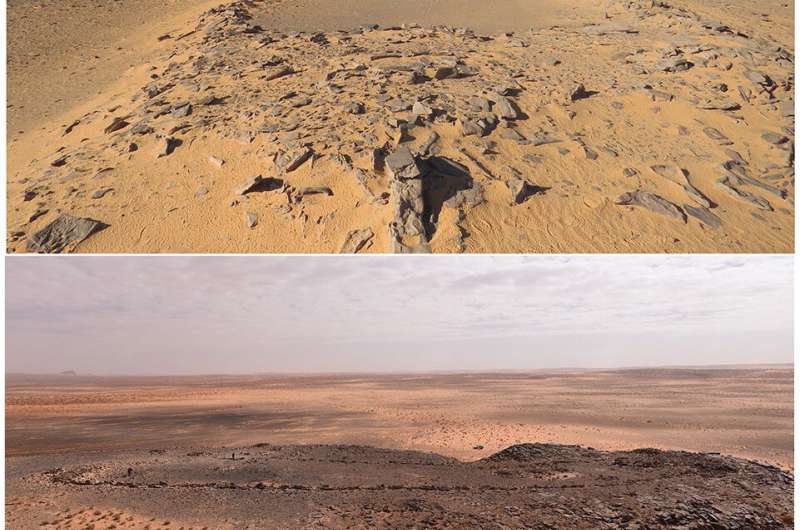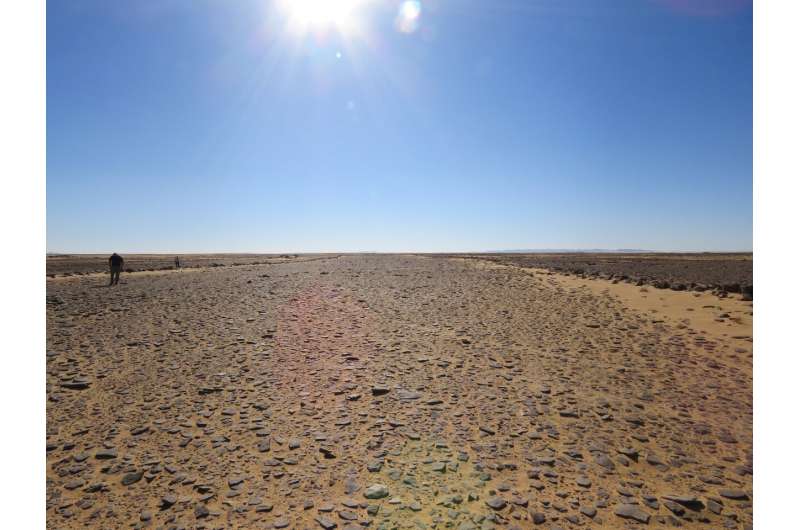August 25, 2020 report
Survey of mustatils shows them to be some of the oldest stone structures in the world

An international team of researchers has conducted one of the most intense studies of mustatils to date, and in so doing, have found them to be some of the oldest stone structures in the world. In their paper published in the journal The Holocene, the group describes their study of the unique structures and what they learned about them.
Mustatils are fence-like structures constructed by people thousands of years ago in what is now Saudi Arabia by piling rocks to form low walls—the walls were then formed in the shape of rectangles. In most cases, most of the mustatils that have been identified cannot be made out from the ground—modern study involves airplanes and satellite imagery.
In the years after they were first discovered, mustatils were known as gates, because as seen from an airplane, they resemble the sort of gates used to pen animals. More recently, they have been renamed as mustatil, which means "rectangle" in Arabic. In this new effort, the researchers carried out both a survey of all of the known mustatils (using satellite images) and then conducted site visits. And in one of the site visits, they received permission to collect charcoal residue, which they used to date one of the mustatils to around 5000 BC.
In all, the researchers documented 104 mustatils along the southern edges of the Nefud Desert in Saudi Arabia. They acknowledge that there are likely many more to be found in other parts of the country. They noted that the mustatils were located on a variety of terrain—some were even on the sides of volcanoes. They did not find any evidence that might hold clues as to the purpose of the structures, though some have suggested they might be a form of kite: stone enclosures built to trap animals. But they did find that the mustatils varied dramatically in size, from 15 to 616 meters long. They also noted that there was evidence of gates on some of the mustatils and platforms situated along the short walls of others. They suggest it will take much more study to determine the purpose of the structures.

More information: Huw S Groucutt et al. Monumental landscapes of the Holocene humid period in Northern Arabia: The mustatil phenomenon, The Holocene (2020). DOI: 10.1177/0959683620950449
© 2020 Science X Network





















